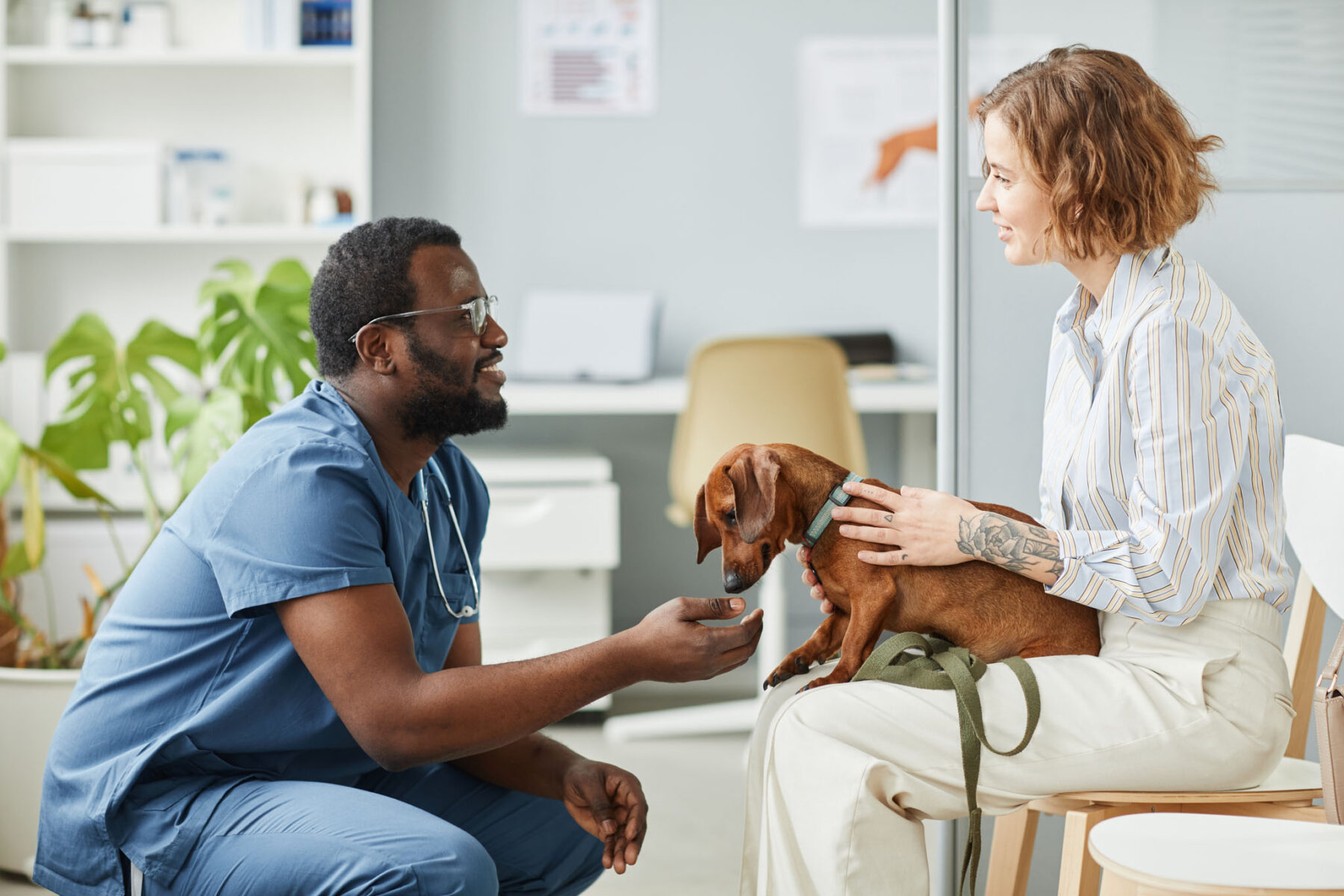Fear Free
The Fear Free Experience
Fear, anxiety, and stress are factors that make veterinary care more of a challenge for all of us.
Most of our patients (and many of their owners!) experience fear, anxiety, and/or stress when coming to the veterinary hospital. This results in a visit being less pleasant for the patient at best. As professionals, we can generally accomplish everything that we need to do in order to care for your pet, but pets often experience fear, anxiety, and stress (also known as FAS) as a result. We feel that it is in the best interest of everyone to change this paradigm so that our patients will better tolerate, and hopefully enjoy, their visits with us.
Veterinary care has changed and evolved over the years, which has enabled us to care for and manage increasingly complicated and diverse medical conditions. One step in this evolution is to improve the emotional wellbeing of animals in all situations. We are using Fear Free practices to accomplish this goal in the veterinary setting.
Five Ways You Can Help Make the Veterinary Visit Fear Free for Your Pet:
- Limit food before the appointment unless medically contraindicated -- bringing pets in hungry increases the reward value of food during the visit to better condition the pet to the positives of care
- Explore waiting room alternatives -- work with the receptionist or other team members to determine the optimal location to wait with your pet prior to care
- Be open to non-traditional techniques -- this can include not taking the pet's temperature, examining the pet in your lap or on the floor and using treat and toy coaxers to move animals willingly onto the scale, into the exam room and onto the table
- Consider proven, new strategies to reduce fear, anxiety, and stress (FAS) in your pet -- in many cases, pets will benefit tremendously from pre-visit medications, supplements or sedatives, as well as conditioning the pet to aspects of vet care prior to their next visit

During a typical veterinary visit, we might use the following strategies:
- Initially avoid eye contact with your pet and focus on you instead
- Provide non-slip surfaces for your pet to stand or rest on to improve balance and enhance stability
- Use gentle pressure to soothe the pet using a towel or compression garment
- Create a calming environment with pheromone diffusers and aromatherapy
- Actively work to reduce stressful noises
- Prescribe anti-anxiety or other calming medications & supplements
- Perform our exam (and/or treatments, if possible) wherever the pet is most comfortable
My pet is still stressed-what do we do now?
If your pet is experiencing FAS during their visit, we will attempt to do what we need to in the least stressful way possible. However, some pets may still be too stressed for us to accomplish these tasks. If your pet is not critically ill, we may ask you to schedule a second appointment and talk with you about giving pre-visit medication before to reduce your pet’s anxiety and stress. The medications we prescribe most often are made to treat pain and anxiety, and are prescribed at a dose appropriate for your pet. In cases of severe FAS, further in-hospital medication may be required using IV sedation. Similar to pre-visit medication, IV sedation is given at a dose that is appropriate for your pet and it is only given when the doctor feels it is safe to do so.
Additional Fear Free Resources
Preparing for your pet's visit
The visit itself
Fear Free at home
